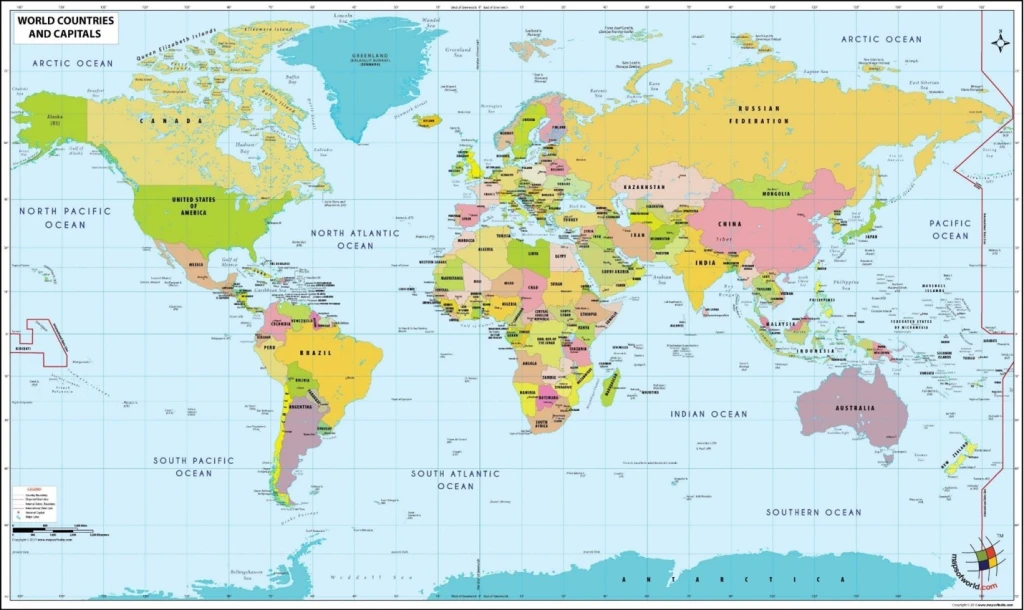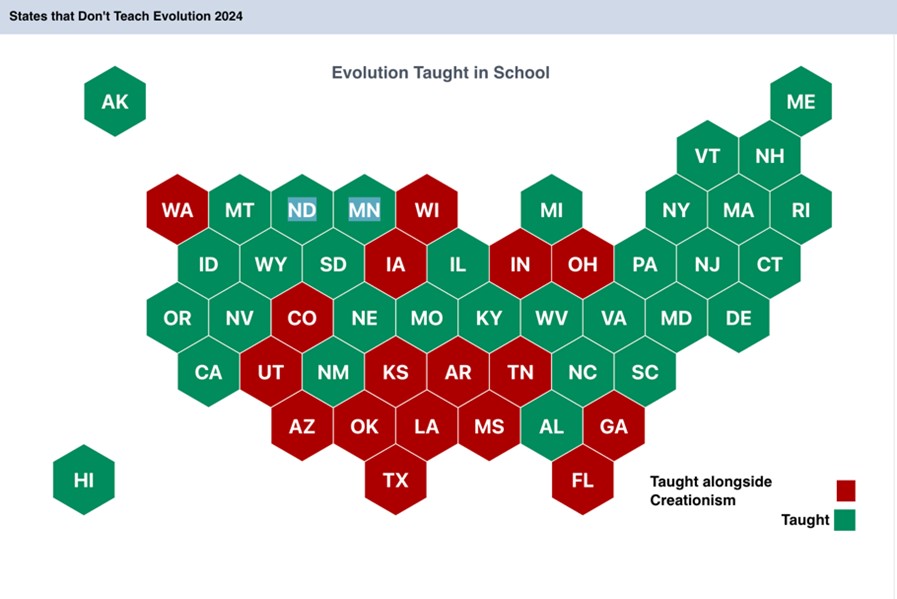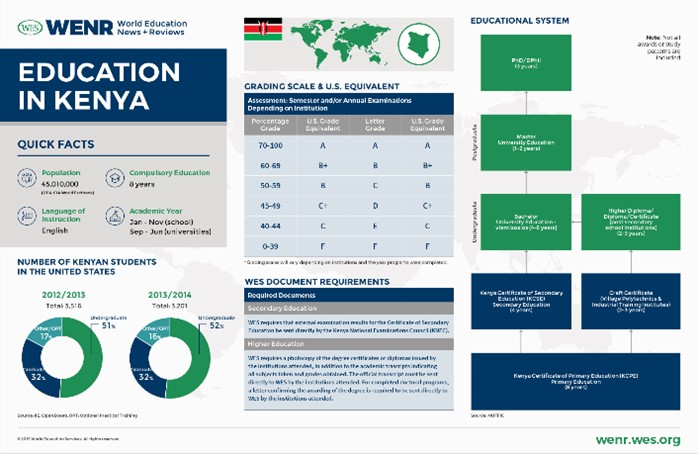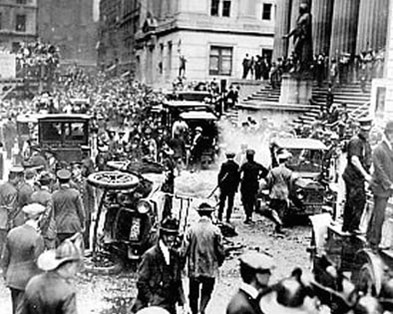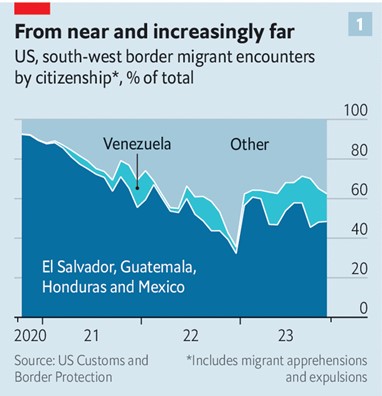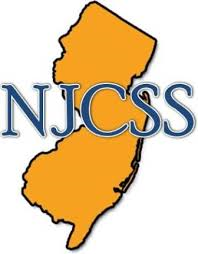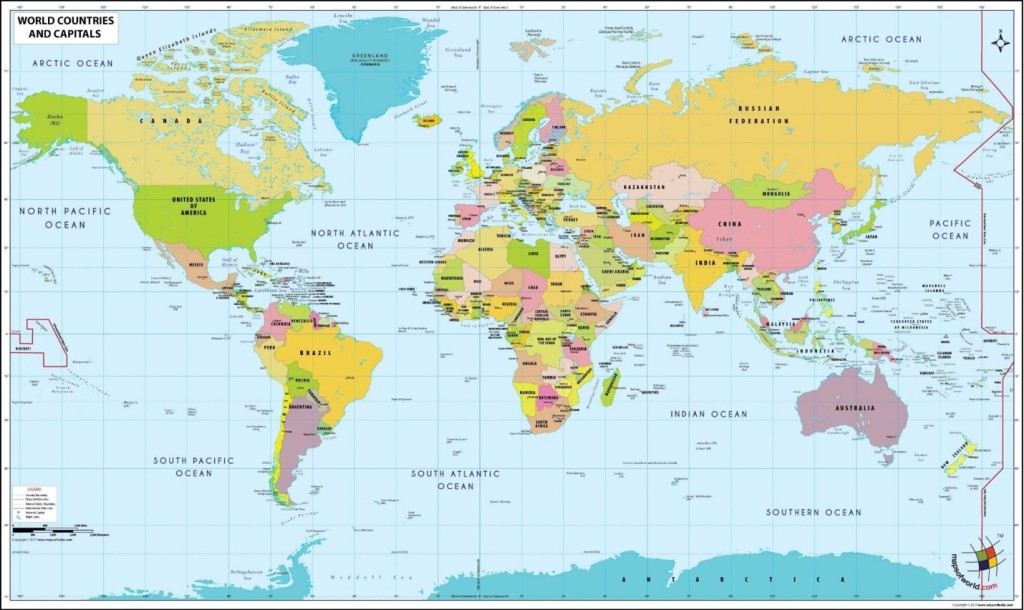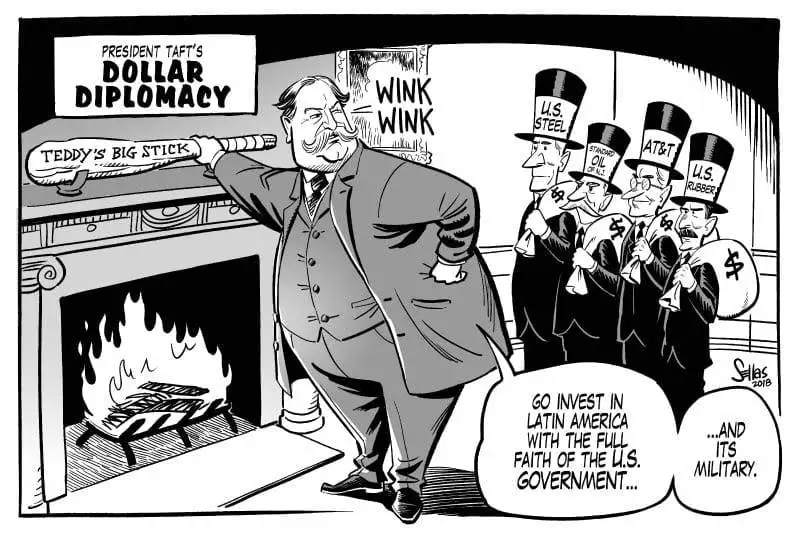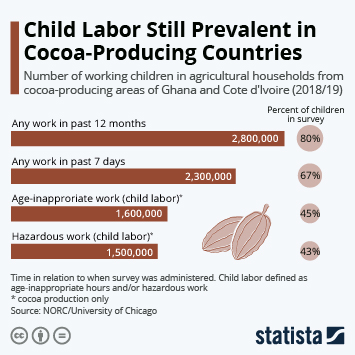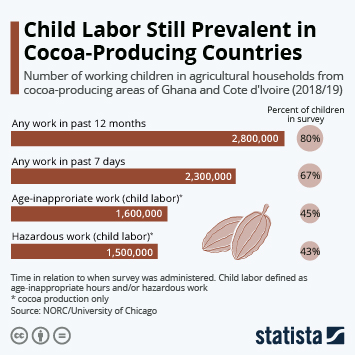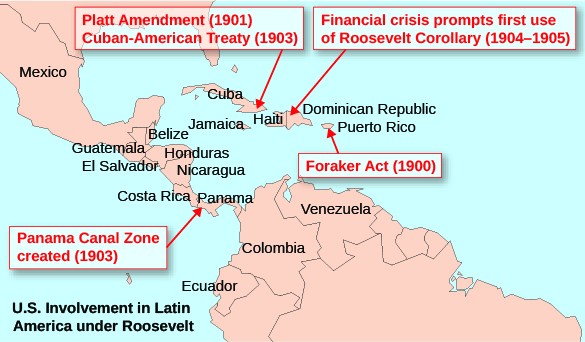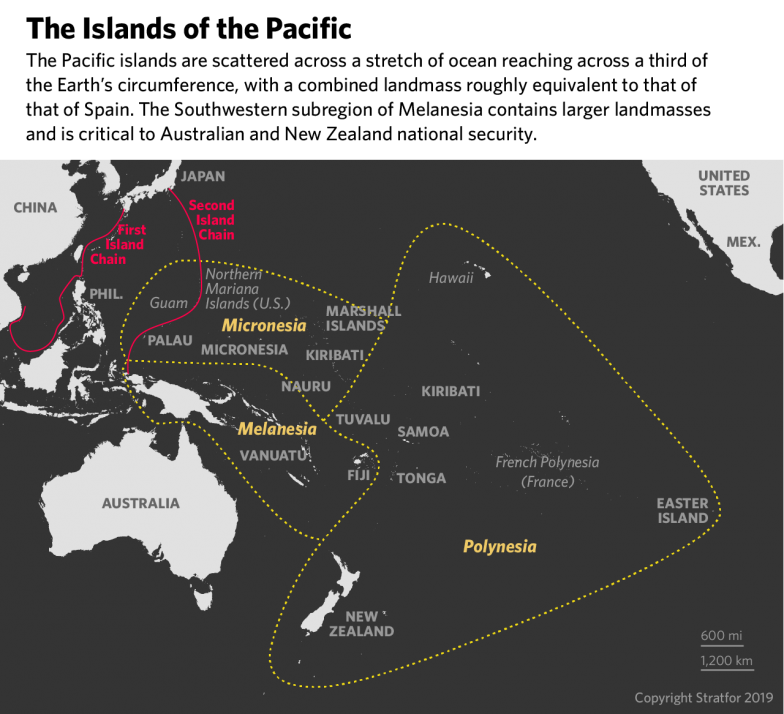The Social Cost of Deindustrialization: Postwar Trenton, New Jersey
Patrick Luckie
Studying local history is something that is often overlooked and underestimated in social studies classrooms around the country. Think about it—do you have any memory of learning about your own local community in a coordinated school or social studies effort? Big ideas like imperialism, global culture, and other themes of the past and present usually take precedence over learning about one’s own local history in the high school. As part of my undergraduate senior research project at Rider University, I grappled with this fact and produced a short study of my own local history which I used to inform my instruction in the classroom. This article will present the research I have done and will end with a short analysis of how my research project on local history has affected my instruction in Ewing High School and how it can change the way we think about teaching local history in all American high school social studies classrooms.
“Trenton’s uniqueness cannot be found anywhere in the world, for the lessons learned cannot be duplicated at any price”[1]
These powerful words were written by Dr. Jack Washington, a teacher of Social Studies in Trenton public schools for over 40 years and author of, The Quest for Equality: Trenton’s Black Community 1890-1965 which traces racial struggle and movements for equality over the city’s history. Trenton’s uniqueness as Washington describes, is a product of its deep history, rooted in the American Revolution, World War II, and the Civil Rights Movement of the 1960s. Trenton was once a manufacturing powerhouse, home to multiple industries which forged the urban landscape of the state’s capital and produced thousands of union jobs for its inhabitants. These included the mighty John A. Roebling’s Sons Company, which aided in the creation of the Brooklyn Bridge and whose factory in West Chambersburg served as a symbol of innovation and opportunity for decades. Trenton’s pottery industry was also one of the largest and most successful in the whole nation alongside its iron, steel, rubber, and textile companies. Together, these industries provided enough stable employment and pay to support a rapidly growing population of mostly first and second generation European immigrants from Italy, Ireland, Germany, Poland, and Hungary, to name a few. Trenton’s manufacturing prowess was best showcased in 1917 with the first lighting of the famous “Trenton Makes, The World Takes” sign on the Lower Trenton Bridge, a symbol which still stands today in 2023.
The “golden age” of the city, as historian John T. Cumbler describes it, lasted from around 1850 to 1920 when Trenton established itself as one of the manufacturing capitals of the nation.[2] Almost perfectly situated between two of America’s largest cities in New York and Philadelphia, Trenton industrialists used its strategic geographic location along the Delaware River to tap into large markets and supply the massive manufacturing needs of the east coast. Trenton at this time was truly a symbol of the American dream, and people flocked to the city in search of opportunities. By 1920, the population of the city surpassed 119,000 people and it was amongst the most densely populated places in the state of New Jersey.[3]
The first signs of the city’s decline came with the weakening of its labor movement. By the 1920s, the age of mechanization had begun and the economic shift from factory work to mechanized manufacturing began weakening labor unions overtime. Worker’s unions and cooperation between owners and workers alike had been central to the functioning of the local economy and the glue by which the city binded itself together. Overtime, businesses could no longer maintain the standards of work they had previously upheld and conditions within the city started to slowly deteriorate. From 1910-1920 Trenton underwent its largest leap in population within a decade and shortly thereafter it began experiencing some of its greatest economic struggles. Plants began relocating outside of the city and unionized jobs were becoming more and more difficult to attain. Economic historians have grappled with this shift in the post-war era, claiming “US corporations aggressively sought to break free of expensive union contracts and to seek out ways to pay lower wages and allied social costs in order to increase profits.”[4] This is a persistent trend in this study. With great increases in population and the changing state of the local and national economy, Trenton suffered meaningful losses in employment and manufacturing output.
With the Great Depression beginning in 1929 and the waging of the Second World War in 1939, Trenton retreated back to manufacturing and away from addressing the issues surrounding labor which had marked its initial decline. The waging of the war meant a massive nation-wide mobilization of industry towards fueling the war effort. The war-time economy of Trenton temporarily revitalized the city. Roebling’s Sons employed droves of new workers, opportunities for overtime became more available, unions strengthened, worker’s pay went up, and the largest wave of black migrants in the city’s history began making their way to Trenton beginning in the 1940s.[5] These migrants came to Trenton and other cities in what is known as The Great Migration. That is the movement of millions of African Americans predominantly from the rural southern states to the urban north and midwest between 1910-1970.
This temporary boom did not yield long-term progress for Trenton in the post-war period. During the 1950s, many of the city’s largest industries began relocating outside the city limits and the economy did not adequately support its largest ever population of over 129,000 people.[6] In 1952, Trenton’s most popular employer Roebling’s Sons was sold to Colorado Fuel and Iron Company which over the next decade cut its employment numbers in Trenton and relocated its major manufacturing and business centers outside the city limits. This was the fate for many of the most popular industries within the city which sold their shares to larger corporations after WWII, leaving the fate of the city’s economy in the hands of interests which had little to no connection to it. The rubber, steel, iron, and pottery industries which had defined the city of Trenton and produced its “golden age” became shadows of their former selves and the physical conditions of the city reflected this change. Overtime, thousands of industrial jobs were lost and the population of Trenton dropped 13,382 people from 1950 to 1960 and an additional 9,381 people the following decade.[7] Population decline continued to the year 2000 and stabilized between 80,000 to 90,000 in the 21st century.
This study seeks to answer two fundamental questions: 1) What were the major effects of deindustrialization on Trenton, NJ in the decades immediately following WWIII? 2) How were these effects felt by the people living within the city at this time? In answering these questions, this study will provide a lens through which race and class come to the forefront of the discussion. Trenton’s decline overlaps with the migration of thousands of African Americans to the city in search of economic opportunities. This demographic shift was the largest in the city’s history and was not met with opportunity but rather inequality and increased racial tension. The major effects of deindustrialization on Trenton, NJ in the post-war period were economic destabilization, movement to the suburbs, and increased racial tensions between white and black Trentonians. Each subsection of this work will dive into these effects individually as well as their overall impact on life in Trenton. It is important to recognize that this movement away from manufacturing and its effects were not phenomena restricted to certain areas or regions. Rather it was a national trend which all rust belt cities like Trenton grappled with in the 21st century. In addition to deindustrialization broadly, the age of mechanized labor, the shifting of the U.S. economy towards greater support for large corporations, and the social movements of the 1960s all played extremely important roles in shaping American cities in the post-war era.
Historiography
Secondary source literature on the decline of U.S. cities in the post-WWII period falls into the fields of American urban, economic, and social history. One of the most popular works on these subjects is historian Thomas J. Sugrue’s The Origins of the Urban Crisis: Race and Inequality in Postwar Detroit, which examines the many ways in which American cities began to decline following WWII with specific focus on racial inequality and division. In his work, Sugrue states that Trenton, like Detroit and other rust belt cities of the time, experienced hundreds of thousands of layoffs in manufacturing jobs nationwide due to the changing state of the U.S. economy and the lack of government spending allocated towards Northern cities.[8] These conditions radically transformed urban environments into almost unrecognizable versions of their industrial heights. Sugrue explores the connections between suburbanization, demographic change, and the racial attitudes of northern whites to produce an all-encompassing case study of the decline of Detroit. At the heart of his argument is that racial segregation and inadequate political responses to signs of crisis determined the fate of the city. The importance of this historical research cannot be overstated. Before this book was originally published in 1996, the stories of Detroit and other American cities who suffered from the consequences of deindustrialization and racial division in the post-war period were largely untold. The Origins of Urban Crisis continues to be one of the most influential modern studies of American urban history and is without doubt one of the most cited pieces of literature in the field.
Jefferson Cowie and Joseph Heathcott, who together produced Beyond the Ruins: The Meanings of Deindustrialization,built on the historical research of Sugrue by studying the impact of post-war deindustrialization across the nation. This book seeks to progress the conversation of historic decline to modern solutions for urban decay and economic instability. In doing so, it compiles a collection of essays from historians and other professionals to further explore deindustrialization and its impact on American cities.[9] From this perspective, the authors identify a complexity of causes and effects of urban decline which vary from city to city but share many similarities nationally. The value of this work is in its wide-scope. By compiling essays from multiple professionals in a variety of related disciplines, the image of declining cities in the U.S. following WWII becomes more clear than ever.
The most recognized work on post-war deindustrialization in specifically Trenton, New Jersey lies within historian John T. Cumbler’s A Social History of Economic Decline: Business, Politics, and Work in Trenton. This book outlines a long trajectory of economic conditions in Trenton beginning in the 1920s with focus on the Great Depression and researches the changing nature of the city up until the book’s publishing in 1989. One of Cumbler’s main arguments includes the notion that America experienced a gradual economic shift from civic to national capitalism following the Great Depression which empowered large corporations while simultaneously destroying the small businesses which held many industrial cities together.[10] He also explores the rich history of the city’s most impactful industries, politicians, union leaders, and manufacturing workers to provide a comprehensive view of Trenton’s economic and social decline. This work provides the foundation of historical knowledge on Trenton required to produce further research on this topic. However, Cumbler’s history of Trenton does not extend as far into the social consequences and effects of deindustrialization as one might expect. Nevertheless, virtually any modern historical literature on the city of Trenton cites this work. This points to the undying credibility of Cumbler as a historian and shows the importance and relevance of his arguments to the continued study of the city’s history.
More recent historical literature on related topics has largely focused on national trends of suburbanization and racial conflict. One such journal article titled “The Rural Past-in-Present and Postwar Suburban Progress” by University of Waterloo professor Stacy Denton studies the shift towards suburbanization following WWII. The author highlights the transformation of previously rural spaces to suburban landscapes and the implications of such transformations on national attitudes and beliefs towards race, culture, and class.[11] In a similar light, economic historian Leah Platt Bouston’s 2007 work “Black Migration, White Flight: The Effect of Black Migration on Northern Cities and Labor Markets” studies the effects of The Great Migration on northern cities and their economies. She also dives into the racist attitudes of northern whites which manifested themselves in movements out of increasingly diversifying cities and into the surrounding suburbs as part of a process termed “white flight.”[12] Both these works of history are incredibly valuable to this study of post-war Trenton for the topics and findings of their research are amongst the greatest effects of deindustrialization on the city.
The research done in this paper will synthesize the secondary source material on the decline of U.S. cities and apply their findings to a specific case study of Trenton, New Jersey. In doing so, it will paint a clearer picture of the more immediate social and economic effects of deindustrialization on the city in the decades following WWII. This will add to the historiography of urban history and Trenton historical study by compiling primary and secondary source documents to more deeply understand the major effects of deindustrialization and economic transformation on the city. These major effects include economic destabilization, massive suburbanization, and increased racial tension. These symptoms of deindustrialization were felt most harshly by the city’s poor ethnic-white and growing black population. More specifically, economic decline in Trenton coincided with the arrival of black migrants which compounded racist attitudes and practices within the city. This is most clear in workplace and housing segregation which new migrants had to face upon their arrival.
Economic instability
Industry leaving Trenton following WWII radically changed the city’s local economy. Unionized factory jobs became harder to attain, poor residents were left with fewer options, and Trenton’s growing black community was segregated in their employment. Long-time union workers like those who worked in the pottery and steel plants found themselves in an unfamiliar situation. As Cumbler explained, “Those workers thrown out of work by plant closings had the hardest time finding work and represented the largest number of Trenton’s unemployed.”[13]
The selling of corporations like Roebling’s Sons produced a much weaker focus on the city’s manufacturing growth and output and instead, large corporations sought for the relocation of facilities and workers to outside the city. This left the existing workforce in the city out to dry and decreased options for employment, especially among the lower-income white and minority black populations.
One action taken by the state and local government to fill this gap created by fleeing industry was growth in the employment of state workers and other public jobs. New Jersey state workers were in the 1950s and 60s, as they still are in the present day, centralized in the capital city of Trenton. Cumbler described this shift from manufacturing to public work as, “Blue Collar to White Collar and White Smock.”[14] This provided some relief to the city’s unemployment problem which exceeded the national average through the 1950s and 60s but it did not come close to meeting the pay and benefit standards that manufacturing jobs had produced just a decade prior. Additionally, the large majority of state workers employed at this time were disproportionately white men. Despite these changes, public and state employment was not enough to lift the city out of its economic slump nor its inherent issues with workplace discrimination.
A large part of the story of economic destabilization in Trenton as a product of deindustrialization was the negative consequences on its black community. Former Trentonian and author Helen Lee Jackson published her autobiography in 1978 charting her experience with racial discrimination as a black woman seeking meaningful employment in the city. Her description of Trenton reads as follows:
In 1940, Trenton was an industrial city with many potteries. Steel mills, factories, and a large auto plant, but the production lines were almost solidly white. Black men swept the floors, moved heavy equipment and shipping crates, and performed other burdensome tasks. In the business sections, they were almost invisible except as window cleaners, janitors, or elevator operators. There were no black salespeople in the stores, banks, or business offices. They were hired as maids, package wrappers, or seamstress. Even the five-and-ten-cent stores refused to hire blacks, except to sweep, dust, or move stock.[15]
Jackson’s firsthand experience with racial segregation and inequality in the city in the 1940s is a reflection of the racial attitudes and prejudices in Trenton and other northern cities earlier in the 20th century. Racist attitudes towards black migrants who largely came from the south was a characteristic of many industrial cities in the U.S. at this time as is highlighted in Sugrue’s work on Detroit and other rust belt cities. With greater numbers of black migrants entering northern cities, the problem of racial discrimination and inequality intensified and the competition for jobs in short supply fuel racist attitudes. According to Sugrue, a combination of factors including employer bias, the structure of the industrial work place, and the overarching ideologies and beliefs of racism and black inferiority contributed to this workplace segregation.[16] For Trenton, these differences in employment were visible to the observer and significantly impacted the lives of those seeking stable income. With the collapse of industry happening simultaneously with a dramatic increase in the city’s black population, this problem compounded. Black residents were not only excluded from whatever factory jobs were left on the basis of their race but they were also labeled as the source of the city’s problems altogether.
In a 1953 study of community services in Trenton, researchers found that the average black resident experienced twice as much unemployment and earned on average 30% less total income than the average white person at this time despite only a one year difference in their average acquired education.[17] These statistics are proof of income inequality and workplace discrimination and provide insight into the lived experiences of black people in Trenton at this time. Furthermore, research from The Journal of Economic History, suggests “black workers were channeled into negro jobs and faced limited opportunities for promotion.”[18] Access to financial resources and meaningful employment were among the largest reasons for black migration to Trenton and other northern cities. Upon their arrival however, they were met with egregious workplace discrimination and were given very little opportunities to climb the economic ladder. Black women specifically made up, “The least utilized pool of potential industrial labor power having much less than proportionate representation with her white counterpart” according to a 1950s study titled, The Negro in the Trenton Labor Market.[19] Many black women, including Helen Lee Jackson, struggled even more so than black men to find employment within the city. These conditions forced economically disadvantaged men and women alike to scramble for jobs and income in order to support themselves and their families.
Changes to the manufacturing economy and workplace discrimination created great instability in Trenton during the 1950s and 60s. Old union workers were suddenly left jobless and the fruits of their loyal labor to the city’s largest industries were now gone. Attempts to revitalize the economy largely failed and economic decline impacted the poor and minority black population of the city more harshly than anyone else in the form of unequal pay and limited job opportunities. With this knowledge, it becomes clear that deindustrialization and the exodus of industry destroyed the economy of Trenton that was historically forged by large-scale manufacturing and robust labor unions and disproportionately affected the new and growing black community.
Suburbanization
Another major consequence of postwar deindustrialization on America’s rustbelt cities was the creation of and migration to the suburbs. Suburbs are the areas where urban centers like Trenton, NJ extend into previously rural environments where new housing developments, industries, and townships began to populate with greater and greater numbers of prior city-dwelling individuals. Historian Kenneth T. Jackson’s work on suburbanization titled,
Crabgrass Frontier: The Suburbanization of the United States, provides the best historical analysis of this phenomenon which swept the nation in the 20th century. Among many important factors, he claims that the roots of suburbanization can be traced to the boom of the automobile industry in the 1920s which enabled those who could afford it to move further and further away from the cities in which they worked. Jackson states, “Indeed the automobile had a greater spatial and social impact on cities than any technological innovation since the development of the wheel” He goes further to explain, “After 1920 suburbanization began to acquire a new character as residential developments multiplied, as cities expanded far beyond their old boundaries, and as the old distinctions between city and country began to erode.”[20]
For Trenton NJ, this shift towards the suburbs was gradual beginning in the 1920s and peaking during the 1950s. It is important to note that suburbanization in Trenton and in cities across the nation happened gradually into the late 20th century. This coincided with a decline in major industries and jobs. Historical research on suburbanization has also revealed that many of these white suburbanites moved to the suburbs to create a physical barrier between them and their racial counterparts.[21] As a result of these factors, thousands of residents with the financial freedom to do so began expanding into the towns on the periphery like Hamilton, Ewing, and Lawrence. Many of whom continued to work as state workers or in other capacities inside Trenton while living outside the city. These towns saw unprecedented growth in the post-WWII years in housing developments thanks to VA and FHA loans which were granted to veterans of the war as part of president Franklin Delano Roosevelt’s New Deal Reforms.[22] It is important to note that these New Deal programs were especially beneficial to white service members and much historical literature has been written about the exclusionary practices associated with housing loans in relation to African Americans. This is relevant because during and shortly after WWII, the largest wave of black migrants traveled from predominantly southern states to Trenton and other northern cities in search of employment opportunities associated with the mobilization of industry towards the war effort. This search for opportunity overlapped with the decay of Trenton’s largest industries, leaving many black migrants below the poverty line, working menial jobs as opposed to fruitful unionized jobs, and in some cases, out of work completely. Compounding these issues was the inaccessibility of reasonable home loans for members of the black community.
The effects of suburbanization on the local economy of Trenton and its inhabitants can be seen through analysis of the popular media. Pride Magazine was a Trenton-based publication which centered its content around black businesses and black business owners. This specific magazine concerned itself with the failure of local politicians to enact positive change in the form of urban renewal plans which were targeted at improving the infrastructure, housing, and employment opportunities within the city. In March of 1972, Pride Magazine issued a publication titled, “Black Businesses Need Your Help!” which featured a section written by the magazine’s publisher Vance Phillips, who received his college education in Trenton. He wrote, “What are we doing to fill the vacuum of the cities which was created by relocation of the established business” He then goes on to say, “After spending 5 years of planning and developing new programs for structural and economic changes, Trenton Model Cities program has failed to meet the potential growth of new and old businesses in our community.”[23] Phillips like many black Americans living in Trenton during the 1970s saw visible signs of the city’s decline through the failure of local businesses. He believed what was needed to fix this problem was a stronger government response along with increased civic action from specifically the black community.[24]
In this same publication, Phillips expressed his belief that, “a person who lives within the city should have preference over persons living outside of the cities in terms of employment.”[25] Here the author is addressing those who live in the surrounding suburbs but continue to fill job positions within the city limits. This would have been a popular message to Trenton’s black business owning population due to the negative effects that rapid suburbanization had on small businesses within the city. In this magazine article, Phillips touches on an number of topics which are extremely relevant to this study. For one, the instability of small businesses in the wake of mass-suburbanization which he observed was largely due to the relocation of both industry and people to outside the city. Mostly ethnically-white Trentonians were leaving the city for the suburbs and taking with them their spending power. With population decline being spearheaded by movements to the suburbs, there simply was not enough money being circulated throughout the city to adequately support the small businesses which propped up its local economy.
Another popular message within this passage highlights that with most of Trenton’s workforce shifting into the surrounding suburbs, so too did its voting power.[26] This left black communities who resided within the urban centers even more powerless as a minority to change their own political environment. Suburbanization brought with it a massive decrease to the city’s population and tax-base. The previously 100,000+ populated city now had just around 80,000 inhabitants by 1970.[27] This rapid population decrease meant that the tax revenue generated was not enough to effectively grapple with the issues facing the economy and the evolving workforce.
Furthermore, local culture within the city which had been forged by America’s largest waves of European immigration in the 19th and early 20th century suffered as a result of deindustrialization and suburbanization. Many of the small businesses and social institutions which had historically characterized the city of Trenton were established by first and second generation Italian, Irish, Polish, and Hungarian immigrants. Many of whom traveled from the larger cities of New York and Philadelphia to find industrial jobs in Trenton. Dennis J. Starr’s book, The Italians of New Jersey, outlines the effects of suburbanization on the “old immigrants” of New Jersey, stating:
The movement to the suburbs and smaller urban places paralleled a major transformation of the state’s urban political economy. Following the war, the state’s largest cities did not participate in the postwar prosperity and economic development. Instead, their industrial bases eroded, their mercantile bases moved to suburban shopping malls and their overall, especially affluent white, populations shrank.[28]
The effect of suburbanization on the local culture of Trenton’s longest serving residents is a source of some historical debate. Cumbler notes that, “Despite suburbanization of the more successful Italians and Slavs, many of Trenton’s ethnic neighborhoods seemed as entrenched as ever in the 1950s.”[29] However, the following decades of the 1950s would see even more of Trenton’s staple “old immigrant” communities relocating to the suburbs and with them their cultural values and traditions. That being said, the cultural diversity of Trenton, New Jersey created by its ethnic melting pot of a history can still be felt today in 2023. Walking the streets of some of its most popular neighborhoods like Chambersburg, one can still see and feel the Italian influence of churches, social clubs, and bar-restaurants in the area. The main point here is that culture did suffer as a result of suburbanization and population decline, but it did not die, it rather faded into a less obvious and less present version of its former self.
Looking at suburbanization as a major effect of postwar de-industrialization on the city of Trenton provides valuable insight into the cities rise and decline as a manufacturing powerhouse. Like many other rust belt cities of this time period, the trend of suburbanization caused unprecedented changes to the city’s local economy and demographics. The loss of unionized industry jobs encouraged many Trentonians to relocate to the surrounding towns which had recently seen great increases in housing development. In the process, those who left the city unintendedly left Trenton out to dry. Money from the pockets of those who moved to the suburbs was desperately needed to support small businesses in the city and their tax dollars could have been used to make meaningful change to the city’s failing infrastructure. As previously discussed, the local culture of the city also suffered as a result of these consequences which only compounded with each decade of further suburbanization and relocation away from the city. With a decreasing population, aging workforce, and a new wave of migrants without sufficient employment opportunities, the city began to decline into an unrecognizable version of its “Golden Age” of the 1920s.
Racial tension
Trenton’s deindustrialization and its history of racism and inequality are inextricably linked. In 1986, Historian Dennis J. Starr published, History of Ethnic and Racial Groups in Trenton, New Jersey: 1900 – 1960, which acts as one of the foremost important pieces of historical literature on Trenton race-relations. This research clearly establishes a link between deindustrialization and increased racial tensions by claiming:
As industries closed down or reduced their work force it became harder for Afro-American migrants to get a toe hold on the traditional ladder of social mobility–a factory job. Meanwhile the city’s sizable Italian, Polish and Hungarian communities became fearful lest their jobs be eliminated, their neighborhoods integrated. A siege mentality developed in light of the population shifts and exodus of industries, commercial businesses, colleges and government offices.[30]
This “siege mentality” was amplified overtime with the overcrowding of black communities in Trenton and the extension of black-owned or rented residences into shrinking ethnically white neighborhoods.
Between 1950 and 1960, Trenton’s black population rose to 22.8 percent of the total population. As discussed earlier, Trenton was a historically segregated city but in the 1950s and 60s this racial division took on a whole new light given the increases in population and decreases in economic opportunities and industry.[31] Trenton historian Jack Washington described Trenton following WWII stating, “That the 1950s was a period of benign neglect for the Black community is an understatement, for Black people were forgotten while their economic and political troubles continued to mount.”[32] These economic troubles can be seen most clearly through examination of housing segregation in the city and its continued influence on the lives of Trentonians. Along with housing and workplace discrimination, ethnically white residents used black migrants as scapegoats for their city’s economic misfortunes and decline.
Housing in Trenton, NJ after the postwar years can be characterized as both segregated and worse for wear. Following the largest influx of black immigrants to the city in the late 1940s and early 50s, this new population was largely forced to live in the Coalport and Five Points areas of the city on its interior.[33] Housing opportunities for black residents were few and far between and were in most cases aged and deteriorated. Starr shed light on this inequality revealing, “By 1957 over 80 per cent of the city’s housing was over 50 years old and 20 percent of all housing units were dilapidated or had deficient plumbing.”[34] This was a problem for all city-dwellers and stood as a marker of the city’s decline following deindustrialization. For the black community, this problem was especially real given that the neighborhoods with the worst physical damage and infrastructure were those areas in which they settled. A 1950s survey of the city titled, Negro Housing in Trenton found, “the percentage of substandard housing among the Negro population is four times higher than that for the general population.”[35] Not only were black Trentonians limited in their occupation but also in the location and quality of their housing. This same study of housing in Trenton concluded that 1,200 new residential spaces would have to be erected in order to meet the needs and standards of the city. These spaces were not created and public housing efforts did not meet the requirements of the new growing population.[36]
With little options for housing, a lack of policy action to create new housing, and increases to the population, black migrants had no choice but to expand into Trenton’s old ethnically-white neighborhoods. In the eyes of many in the white majority, black migrants were the corrupting force which acted to take down their beloved city. Declining social and economic conditions in the city paired with old racist tendencies to produce conflict between ethnic groups. Cumbler eloquently explains this clash stating:
The decline of their industrial base narrowed the boundaries of choice for both white and black Trentonians, and in doing so it intensified conflict between them. Increasingly, Trenton’s problems became defined by the city’s white residents in terms of growth of its black population. Actually, its problems had other sources: the loss of its tax base with the closing down of factories, dilapidation of the existing housing stock, and the declining income of its citizens of whatever color.[37]
This excerpt captures the situation in Trenton during the 1950s and 60s in terms of race relations and the overall decline of the city. Racist attitudes were not a new trend in Trenton but were compounded with the arrival of large populations of black migrants. From the white perspective, black migrants were aiding in the destruction of the city. From the black perspective, Trenton did not provide the necessary resources for which they traveled north in search of in the first place.
The 1960s and the Civil Rights era was the historical boiling point for racial tensions and division in Trenton. The influence of the NAACP and other organizations for the advancement of racial equality along with intense riots brought race and class to the forefront of Trenton’s post-industrial issues. Most impactful, Trenton race riots following the assassination of Dr. Martin Luther King Jr. exploded in early April of 1968. These riots lasted for multiple days and resulted in fires erupting around the city as well as over 7 million dollars in damage to over 200 different businesses in Trenton at the time. During the chaos, around 300 mostly young black men were arrested by Trenton Police. The devastating damage to the downtown section of the city caused many to flee and abandon it altogether in the years that followed.[38] It would be unfair to say that these riots were a direct result of deindustrialization in postwar Trenton. However, the city’s history of racial inequality and the compounding forces of racial tension as a result of deindustrialization point to the creation of fertile ground for public outrage. Of course, the assassination of Dr. Martin Luther King Jr. served as the catalyst for race riots in the city but the broader history of discrimination and inequality in Trenton suggests an intense decades-long build up to the events that unfolded in April of 1968.
Conclusion
Trenton’s rise and fall as an American industrial city is truly a fascinating case study of the post-war era in U.S. history. What was once a manufacturing powerhouse along the Delaware River strategically placed between the two large cities of New York and Philadelphia was reduced to a shadow of its former glory by the 1950s and 60s. The causes of this decline can be found in the removal of industry away from the city following the war effort and signs of economic decline can be traced as far back as the 1920s. The effects of this shift however, remain the most significant in the broader history of the city. Rapid deindustrialization meant that wages and opportunities were significantly limited for all Trentonians but especially for its segregated black community. Many of those who could afford it elected to move to the surrounding suburbs, bringing with them their tax dollars, their votes, and their culture. Lastly, deindustrialization and the consequences of a radically transformed Trenton increased racial tensions in the form of housing and workplace discrimination.
These effects offer new insights into the Trenton of today. Trenton now has a black majority and interestingly, those same areas which housed black migrants in the 1950s on the city’s interior are still today in 2023 the site of high unemployment and low opportunities. Walking the streets of Trenton, one is quickly reminded of its rich history with many of its houses and abandoned factories still standing today as a reminder of the city’s complicated history. A hopeful message could be that a greater understanding of Trenton’s post-war history could provide the necessary insight to create better living conditions and opportunities for all its residents. However, today Trenton remains a city in an intense state of recovery from its industrial past. Historical research has been done to show that urban renewal plans have largely failed to revitalize the city’s economy in the 20th and 21st centuries and issues such as crime, poverty, drug abuse, poor infrastructure, among others continue to loom over the once prosperous city.
Today, the “Trenton Makes, The World Takes” sign on the Lower Trenton Bridge still stands bright but its meaning has drastically changed since the last century. What was once a beacon of promise and stability is now a constant reminder of how far the city has fallen from its industrial and manufacturing heights.
Findings and value to teaching
Upon completing this research paper on Trenton, I gave a lesson to high school world history students at Ewing High school as part of my undergraduate co-teaching field work. Ewing is one of the border towns to the city of Trenton and was one of the most popular destinations for suburbanites who left the city in the 20th century at least in part because of deindustrialization and the city’s overall decline. The proximity of the topic and the familiarity students had with popular street names, businesses, and buildings in the city created a feeling of relevance that sparked engagement. Students were surprised to be learning about a topic so close to home and they responded with passionate discussion and the creation of meaningful connections which were sparked through a mix of group and whole class discussions.
For social studies teachers, this successful shift from world history topics to a more grass roots approach to teaching local history can be used as a template for future lessons. Topics frequently come up during different units throughout the school year which deeply relate to the local history of wherever kids go to school. For Ewing students, Trenton’s decline as an industrial city directly related to their lived experiences. Many of my students had lived in or around Trenton for most of their lives. This practice of teaching local history to students is not overwhelming nor is it undoable. The same amount of effort it takes to create a lesson in a world history or AP class can be channeled into research dealing with one’s own local environment and history.
This template for teaching local history can be used to generate engagement in the classroom which is unique to any other topic. Once students are given the opportunity to learn and ask questions about their own town, city, home, etc. they begin to view the world through a more historical lens which is the goal of many if not all high school social studies teachers. Overall, my experience with this approach was overwhelmingly positive and I encourage any and all educators to shift their focus for at least one day of the year towards exploring their own local history and connecting it to larger themes within our discipline.
References
Primary Sources
Black Businesses Need Your Help!. Pride Magazine. Trenton Public Library. March 1972. https://www.trentonlib.org/trentoniana/microfilm-newspapers/
Dwyer, William. This Is The Task. Findings of the Trenton, New Jersey Human Relations Self-Survey (Nashville: Fisk University, 1955).
Lee, Helen J. Nigger in the Window. Library of Congress, Internet Archive 1978.
Negro Housing in Trenton: The Housing Committee of the Self Survey. Trenton Public Library. Trentoniana Collection. Ca 1950.
“Negro in the Trenton Labor Market,” Folder: Community Services in Trenton, Box: Trenton Council on Human Relations, Trentoniana Collection, Trenton Public Library.
“Study of Community Services in Trenton,” Folder: Community Services in Trenton, Box: Trenton Council on Human Relations, Trentoniana Collection, Trenton Public Library.
Trenton Council of Social Agencies, Study of Northeast Trenton: Population, Housing, Economic, Social and Physical Aspects of the Area. Folder: Study of Northeast Trenton. Box 1: African American Experience. Trentoniana Collection. Trenton Public Library. 1958.
Secondary Sources
Boustan, Leah Platt. “Black Migration, White Flight: The Effect of Black Migration on Northern Cities and Labor Markets.” The Journal of Economic History 67, no. 2 (2007): 484–88. http://www.jstor.org/stable/4501161.
Cowie, J. & Heathcott, J. Beyond the Ruins: The Meaning of Deindustrialization. Cornell University Press, 2003.
Cumbler, John T. A Social History of Economic Decline: Business, Politics, and Work in Trenton (New Brunswick: Rutgers University Press, 1989).
Denton, Stacy. “The Rural Past-in-Present and Postwar Sub/Urban Progress.” American Studies 53, no. 2 (2014): 119–40. http://www.jstor.org/stable/24589591.
Division of Labor Market and Demographic Research. New Jersey Population Trends 1790 to 2000 (Trenton, NJ: New Jersey State Data Center, August 2001).
Gibson, Campbell. U.S. Bureau of the Census: Population of the 100 Largest Cities and Other Urban Places in the United States: 1790 – 1990, (Washington D.C.: U.S. Bureau of the Census, 1998).
Jackson, Kenneth T. Crabgrass Frontier: The Suburbanization of the United States. Oxford University Press, 1985.
Leynes, Jennifer B. “Three Centuries of African-American History in Trenton.” Trentoniana Collection. Trenton Historical Society. 2011.
Starr, Dennis J. “History of Ethnic and Racial Groups in Trenton, New Jersey, 1900-1960,” Trentoniana Collection. 1986.
Starr, Dennis J. The Italians of New Jersey: A Historical Introduction and Bibliography. New Jersey Historical Society. Newark, NJ. 1985.
Strangleman, Tim, James Rhodes, and Sherry Linkon. “Introduction to Crumbling Cultures: Deindustrialization, Class, and Memory.” International Labor and Working-Class History, no. 84 (2013): 7–22. http://www.jstor.org/stable/43302724.
Sugrue, Thomas J. The Origins of the Urban Crisis: Race and Inequality in Postwar Detroit. (Revised Ed.). Princeton University Press, 2005. Originally published 1996.
Washington, Jack. The Quest for Equality: Trenton’s Black Community 1890-1965. Africa World Press. 1993.
[1] Jack Washington, The Quest for Equality: Trenton’s Black Community 1890-1965, Africa World Press, 1993, 56.
[2] John T. Cumbler, A Social History of Economic Decline: Business, Politics, and Work in Trenton, (New Brunswick: Rutgers University Press, 1989), 9.
[3] Division of Labor Market and Demographic Research, New Jersey Population Trends 1790 to 2000 (Trenton, NJ: New Jersey State Data Center, August 2001), 23.
[4] Tim Strangleman, James Rhodes, and Sherry Linkon, “Introduction to Crumbling Cultures: Deindustrialization, Class, and Memory.” International Labor and Working-Class History, no. 84 (2013), 19.
[5] Cumbler, A Social History, 132-133.
[6] Campbell Gibson, U.S. Bureau of the Census: Population of the 100 Largest Cities and Other Urban Places in the United States: 1790 – 1990, (Washington D.C.: U.S. Bureau of the Census, 1998)
[7] Division of Labor, New Jersey Population Trends, 26.
[8] Thomas J. Sugrue, The Origins of the Urban Crisis: Race and Inequality in Postwar Detroit, (Revised Ed.), Princeton University Press, 2005, Originally published 1996, 128.
[9] Jefferson, Cowie & Joseph Heathcott, Beyond the Ruins: The Meaning of Deindustrialization, Cornell University Press, 2003. 1-3.
[10] Cumbler, A Social History, 93-95.
[11]Stacy Denton, “The Rural Past-in-Present and Postwar Sub/Urban Progress,” American Studies 53, no. 2 (2014): 119.
[12]Leah P. Boustan, “Black Migration, White Flight: The Effect of Black Migration on Northern Cities and Labor Markets.” The Journal of Economic History 67, no. 2 (2007): 484-485.
[13] Cumbler, A Social History, 147-148.
[14] Cumbler, A Social History, 145.
[15] Helen J. Lee, N—-r in the Window, Library of Congress, Internet Archive 1978, 131.
[16] Sugrue, Urban Crisis, 93-94.
[17] “Study of Community Services in Trenton,” Folder: Community Services in Trenton, Box: Trenton Council on Human Relations, Trentoniana Collection, Trenton Public Library, 8.
[18] Leah P. Boustan, “Black Migration, White Flight” 485-486.
[19] “Negro in the Trenton Labor Market,” Folder: Community Services in Trenton, Box: Trenton Council on Human Relations, Trentoniana Collection, Trenton Public Library, 33-34.
[20] Kenneth T. Jackson. Crabgrass Frontier: The Suburbanization of the United States, Oxford University Press, 1985, 188.
[21] Stacy Denton, “The Rural Past-in-Present,” 119.
[22] Cumbler, A Social History, 139.
[23] Black Businesses Need Your Help!. Pride Magazine. Trenton Public Library. March 1972, 5
[24] Black Businesses, Pride Magazine, 6
[25] Black Businesses, Pride Magazine, 6-7
[26] Black Businesses, Pride Magazine, 6-7.
[27] Gibson, U.S. Bureau of the Census, 43.
[28] Dennis J. Starr, The Italians of New Jersey: A Historical Introduction and Bibliography, New Jersey Historical Society, Newark, NJ 1985, 54.
[29] Cumbler, A Social History, 148-150.
[30] Dennis J. Starr, “History of Ethnic and Racial Groups in Trenton, New Jersey, 1900-1960,” Trentoniana Collection, 1986, 16-17.
[31] Cumbler, A Social History, 153.
[32] Washington, The Quest for Equality, 136.
[33] Trenton Council of Social Agencies, Study of Northeast Trenton: Population, Housing, Economic, Social and Physical Aspects of the Area, Folder: Study of Northeast Trenton, Box 1: African American Experience, Trentoniana Collection, Trenton Public Library, 1958, 53-54.
[34] Starr, Ethnic and Racial Groups in Trenton, 15.
[35] Negro Housing in Trenton: The Housing Committee of the Self Survey, Trenton Public Library, Trentoniana Collection, ca 1950s , 63.
[36] Negro Housing, Housing Committee, 67.
[37] Cumbler, A Social History, 156.
[38] Jennifer B. Leynes, “Three Centuries of African-American History in Trenton,” Trentoniana Collection, Trenton Historical Society. 2011, 3-4.
